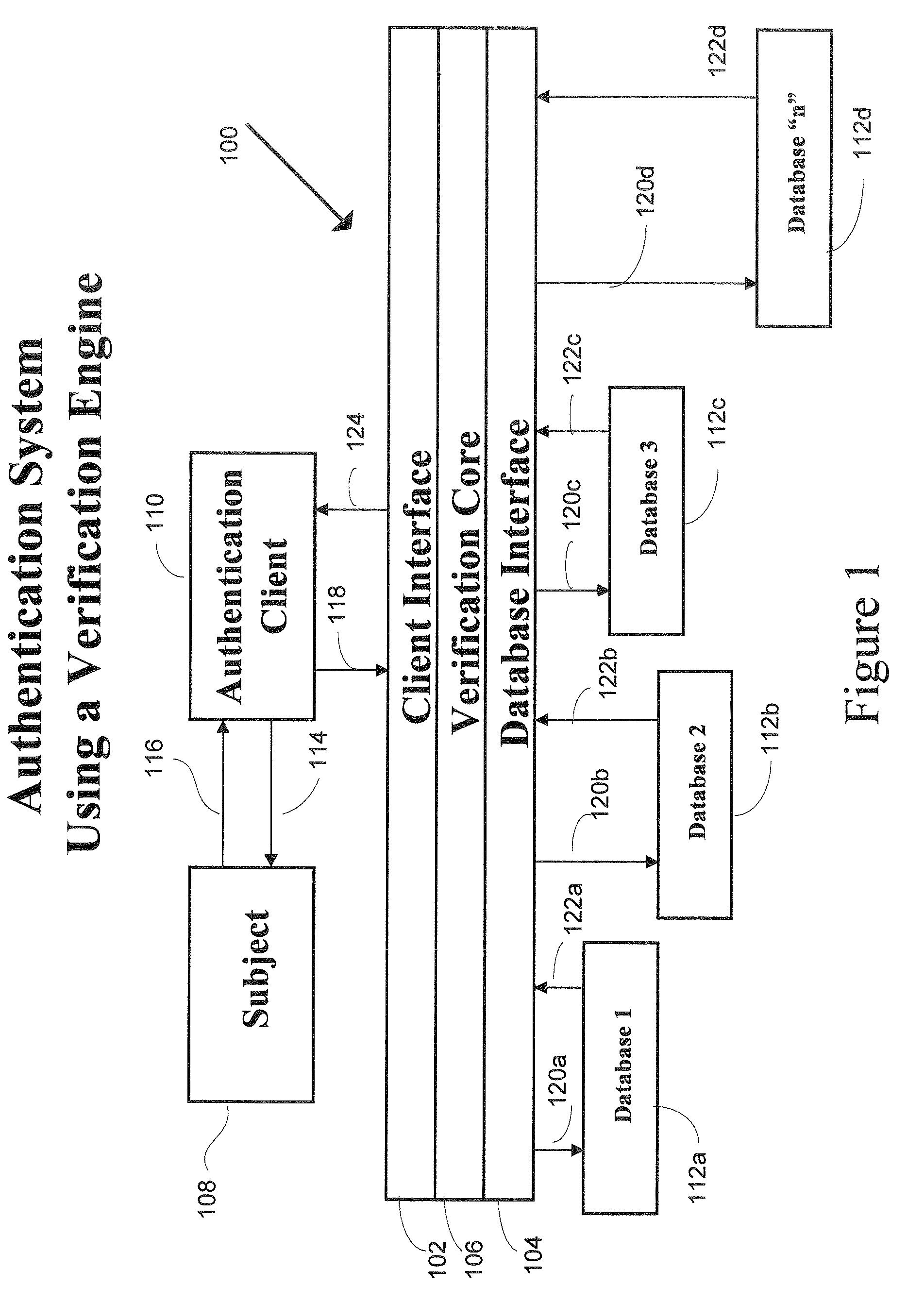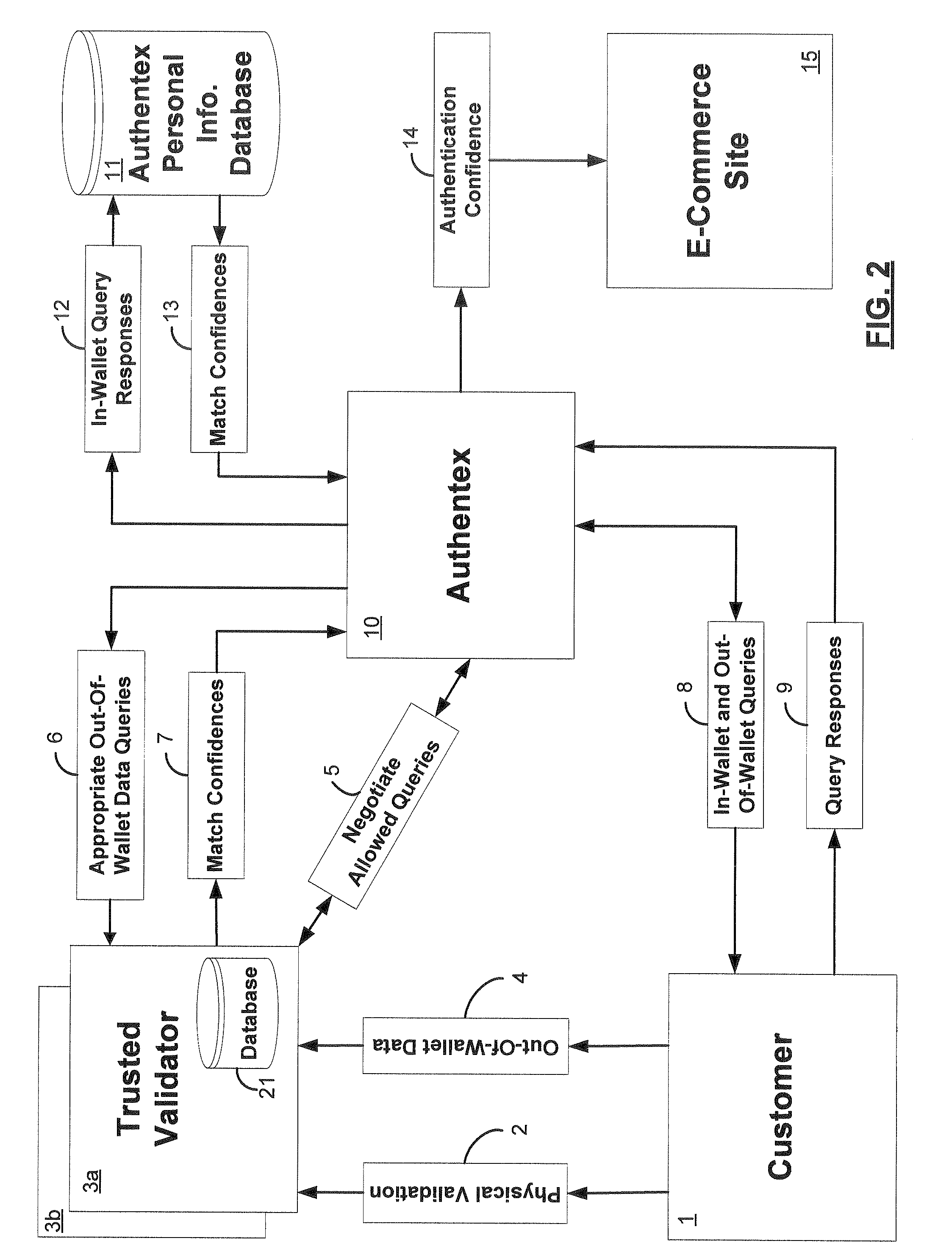Verification engine for user authentication
a verification engine and user authentication technology, applied in the field of remote user authentication, can solve the problems of inability to work with a shared information system only when, invading privacy, and complicated integrating out-of-wallet information into an authentication system, and achieve the effects of less intrusion, more flexibility, and more security
- Summary
- Abstract
- Description
- Claims
- Application Information
AI Technical Summary
Benefits of technology
Problems solved by technology
Method used
Image
Examples
Embodiment Construction
[0024]Embodiments consistent with the present invention provide the ability to authenticate a subject even if the subject has had no prior contact with the system and has had no access to digital signatures, certificates, or passwords. One example of such a subject would be a person who is ready to retire and wants to set up his Social Security payments. Such a subject would possess or have the ability to access a computer and a network connection, such as through the Internet, but he is presumed to be an otherwise unsophisticated user. Another example of a user requiring authentication would be a subject trying to effect an online payment at an online store, or a subject trying to effect a transaction with his financial institution. The problem is to authenticate these subjects without requiring undue effort on the part of the subjects. To facilitate clarity and for ease of discussion, the references to the subject herein will assume a remote individual or entity that is accessing ...
PUM
 Login to View More
Login to View More Abstract
Description
Claims
Application Information
 Login to View More
Login to View More - R&D
- Intellectual Property
- Life Sciences
- Materials
- Tech Scout
- Unparalleled Data Quality
- Higher Quality Content
- 60% Fewer Hallucinations
Browse by: Latest US Patents, China's latest patents, Technical Efficacy Thesaurus, Application Domain, Technology Topic, Popular Technical Reports.
© 2025 PatSnap. All rights reserved.Legal|Privacy policy|Modern Slavery Act Transparency Statement|Sitemap|About US| Contact US: help@patsnap.com



